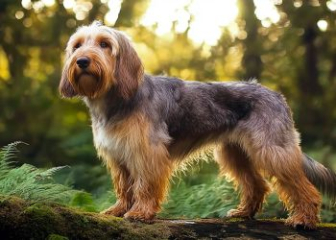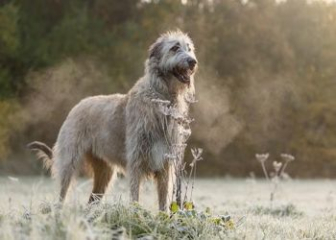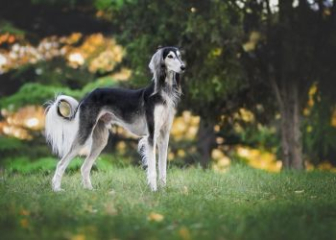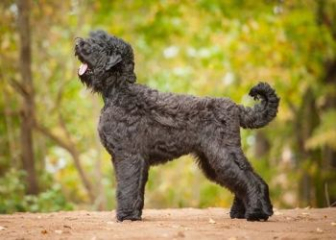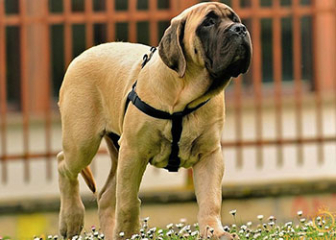Papillon – A Beautiful, Intelligent Small Dog Breed
Blog | by
The Papillon is a charming small companion breed from France and Belgium, known for its adorable appearance and distinctive butterfly-shaped ears, with an average lifespan of 13–15 years.
The Papillon, also known as the Butterfly Dog, is one of the oldest companion breeds, originating from France and Belgium. With their characteristic large, butterfly-shaped ears, intelligent nature, and friendly disposition, Papillons are excellent family pets.
If you want to discover more about the origin, appearance, personality, and proper care for the Papillon, continue reading this detailed article by Dog breed!
Where does the Papillon originate from?
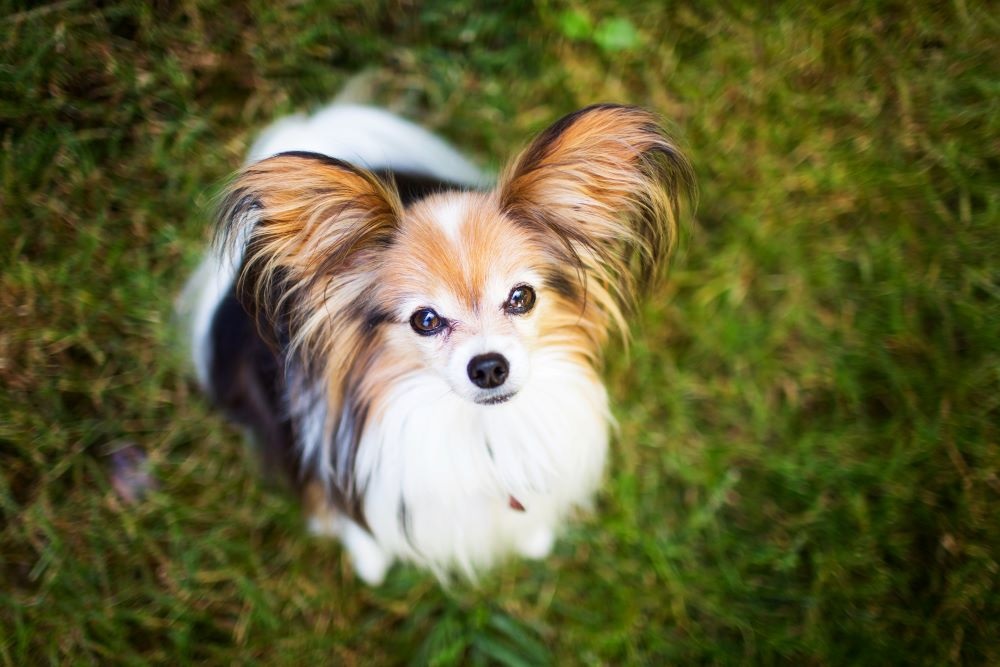
The Papillon is a small companion dog breed from France and Belgium.
The Papillon, also known as the Butterfly Dog or Continental Toy Spaniel, is among the oldest companion dog breeds in the world, originating from both France and Belgium. The name "Papillon," meaning "butterfly" in French, was inspired by this breed's distinctive erect ears resembling butterfly wings.
History and Development of the Papillon
-
Papillons first appeared in Europe during the Renaissance period, around the 13th to 15th centuries, and were adored by nobility and royal families. They are featured in many old European paintings. Initially, they were called Epagneul Nain or the Dwarf Spaniel, later known as the Continental Toy Spaniel.
-
During the 18th and 19th centuries, Papillons became symbols of the French royal family. Initially, the breed commonly had drooping ears, but after selective breeding, a variation emerged with erect, butterfly-shaped ears.
-
In 1915, the American Kennel Club (AKC) officially recognized the Papillon as a distinct breed.
-
Today, the Papillon is popular worldwide due to its adorable appearance and intelligence.
Classification of the Papillon
Papillons are categorized into two main types based on their ear shape: the erect-eared Papillon ("butterfly ears") and the drop-eared Papillon (Phalène). Let's explore more about the erect-eared type:
Erect-Eared Papillon – "Butterfly Dog"

Erect-Eared Papillon – "Butterfly Dog"
This is the most popular variety and is officially recognized by kennel clubs. It has the following characteristics:
-
Ears: Upright ears, covered with long, flowing hair that resembles butterfly wings.
-
Appearance: Elegant and graceful.
-
Personality: Energetic, intelligent.
Drop-Eared Papillon (Phalène) – "Moth Dog"
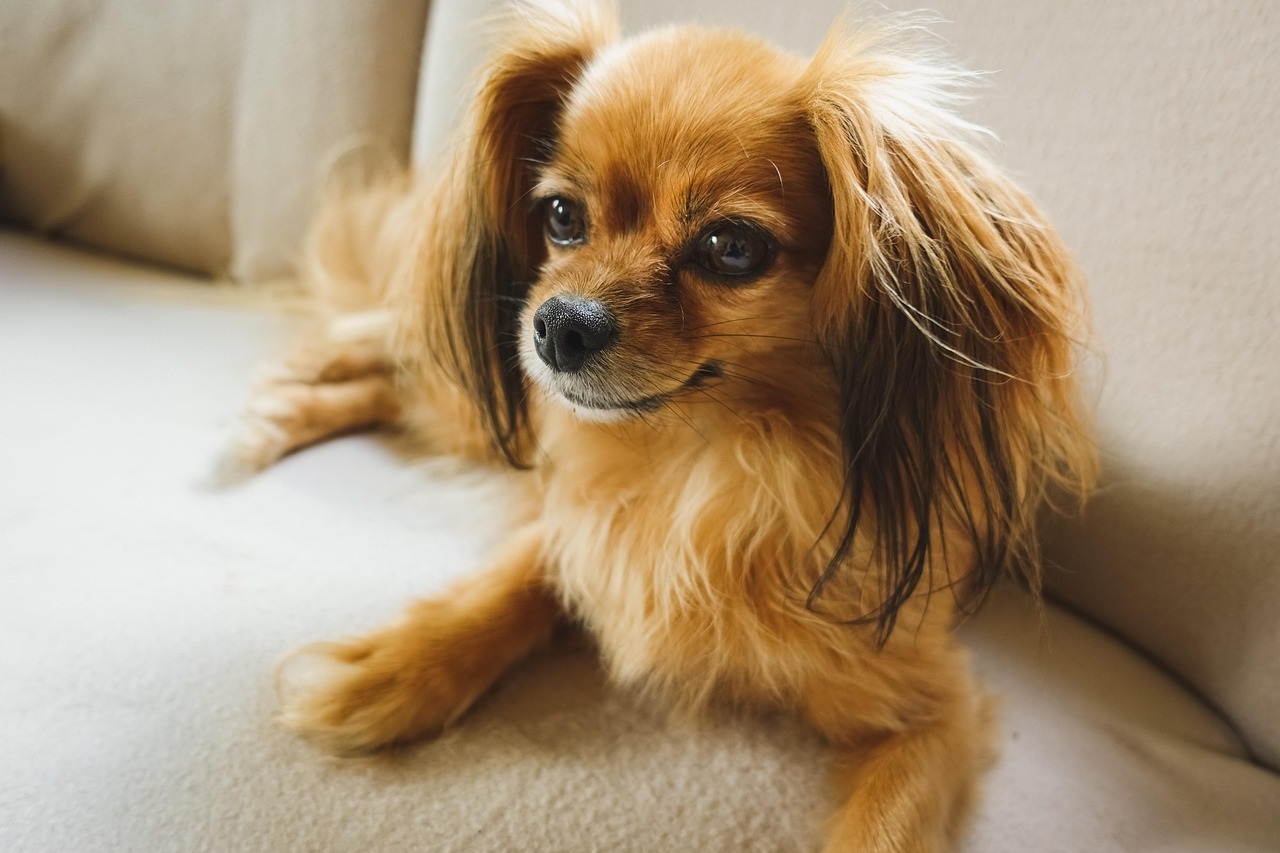
Drop-Eared Papillon (Phalène) – "Moth Dog"
This is the original form of the Papillon breed before the erect-eared variation was developed. Today, the Phalène is not as common as the erect-eared Papillon.
-
Ears: Drooping, with long, flowing hair.
-
Name: "Phalène" means "moth" in French.
-
Personality: Calmer, less energetic compared to the erect-eared Papillon.
Physical Characteristics of Purebred Papillons
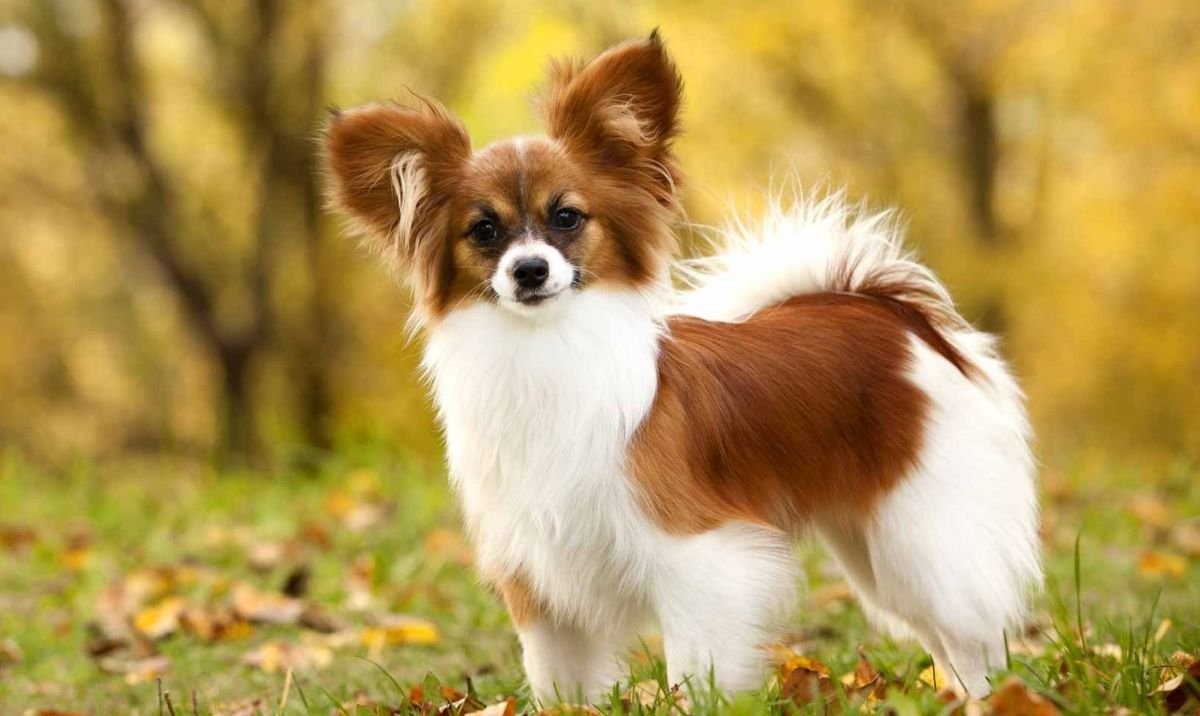
The Papillon Dog Has Butterfly-Shaped Ears
The Papillon is a small-sized dog breed, known for its agility and distinctive butterfly-shaped ears. Let's explore in detail the appearance of a purebred Papillon:
-
Height: 20–28 cm
-
Weight: Males 3.6–4.5 kg, females 3.2–4.1 kg
-
Body: Compact, balanced; smaller than Miniature Poodles, larger than Chihuahuas, and slimmer than Pugs.
-
Ears: Large, erect ears with long, flowing hair resembling butterfly wings. Some varieties have drooping ears (Phalène).
-
Head: Small and proportionate.
-
Eyes: Large, almond-shaped, dark-colored.
-
Nose: Small, black nose, usually with a white marking on top.
-
Muzzle: Short, slightly pointed.
-
Tail: Long, abundantly feathered, curved over the back.
-
Build: Straight back, moderately long legs, small compact feet similar to rabbit paws.
-
Movement: Graceful, elegant gait.
-
Coat: Long, soft, silky, slightly wavy, without an undercoat, minimal shedding compared to other long-haired breeds; longer hair on chest, ears, legs, and tail.
-
Coat Colors: White base combined with other colors such as white-black, white-brown, white-red, white-gold, or cream. Papillons are never single-colored, always featuring at least two colors.
Temperament of the Papillon (Butterfly Dog)
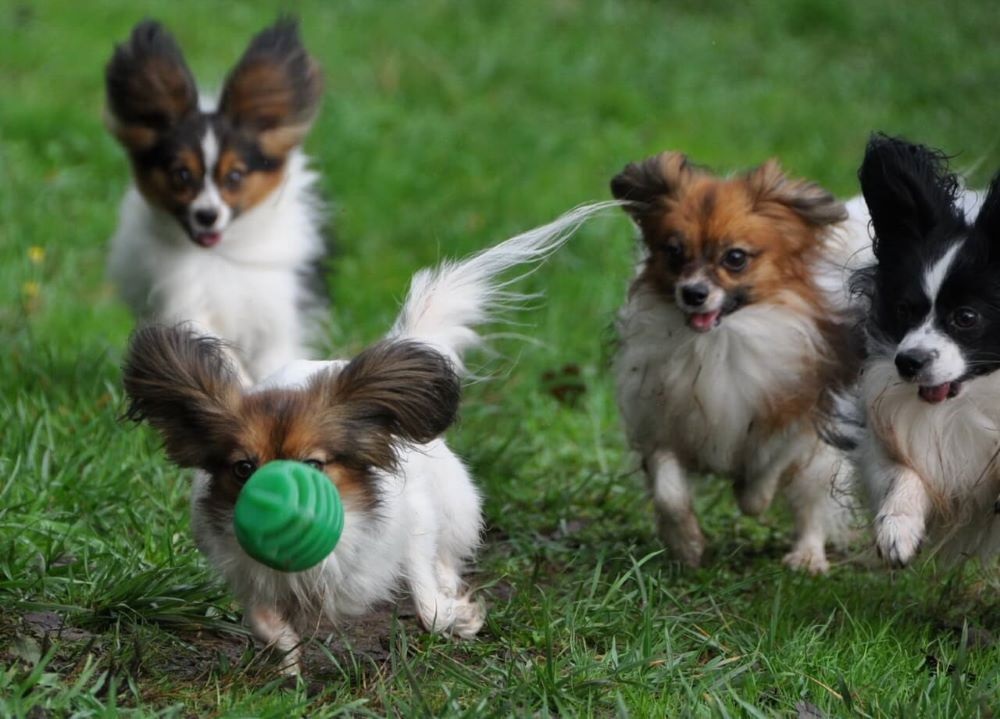
Papillon dogs playing with a ball
Papillons have a luxurious, royal appearance and were historically favored by nobles and royalty. Despite their sophisticated looks, they’re incredibly friendly, lively, and rank among the smartest dog breeds in the world. Let’s explore their personality traits in more detail:
Highly Intelligent
The Papillon ranks 8th among the top 10 most intelligent dog breeds in the world—higher than Rottweilers and Australian Cattle Dogs, just behind Border Collies, Poodles, Doberman Pinschers, and Shetland Sheepdogs (according to Stanley Coren). They learn commands quickly, making them easy to train and handle.
Lively and Full of Energy
Though small, Papillons are extremely lively and energetic. They love running, playing, and exploring their surroundings rather than lounging lazily indoors. They prefer to participate in their owner’s activities and dislike being confined for too long.
Less Barking Than Other Small Breeds
Papillons rarely bark without reason, typically barking only when necessary, such as seeing strangers or when excited. However, they don’t bark persistently like Chihuahuas or Pomeranians.
Loyal and Attached to Their Owners
Papillons are extremely loyal dogs, preferring to stay close to their owners and enjoying affection and cuddles. Because of this, they can easily develop separation anxiety when left alone for extended periods. They’re also very friendly with children and other pets if socialized from a young age.
Proper Care for Papillon Dogs
.jpg)
Papillons have long, silky coats.
The Papillon (Continental Toy Spaniel) adapts easily to various living conditions. However, if you want your Papillon to remain healthy and beautiful, it’s essential to provide proper care through a balanced diet, suitable exercise, grooming, and training routines.
Papillon Diet by Age
Papillons require different diets at each stage of their life, tailored specifically to their physical and developmental needs:
Diet for Papillon puppies (2–6 months old):
-
Protein: 22–28% from chicken, beef, fish, eggs, liver, organ meats.
-
Fats: 10–15% from fish oil, olive oil.
-
Fiber & vitamins: Supplement daily through vegetables and fruits.
-
Carbohydrates: Whole grains, brown rice, sweet potatoes.
-
Supplements: Calcium, phosphorus, Omega-3 fatty acids.
-
Water: Always provide clean, fresh water.
-
Meals: 4 times/day, 50–80 grams per meal.
-
Food preparation: Soft, chopped, or blended foods for easy digestion.
Diet for Papillons 6–12 months old:
-
Protein: 22–26%.
-
Moderate fats: 10–12%.
-
Supplements: Glucosamine, calcium.
-
Moderate: Carbohydrates to avoid obesity.
-
Meals: 3 times/day, 100–150 grams per meal.
Diet for adult Papillons (1–6 years old):
-
Protein: 20–25% for muscle maintenance.
-
Carbohydrates: Sufficient energy supply.
-
Fats: Around 8–10%.
-
Fiber & vitamins: Daily supplementation for better digestion.
-
Meals: 2 times/day, 150–200 grams per meal.
Diet for senior Papillons (over 6 years old):
-
Protein: Reduced to 15–18% to ease strain on liver and kidneys.
-
Fats: Reduced to 5–8%.
-
Increased fiber & vitamins: From vegetables and fruits.
-
Meals: 2 times/day, 120–180 grams per meal.
Papillon Grooming and Hygiene
Papillons have long, silky coats but shed minimally compared to other long-haired breeds. Proper grooming ensures their health and beauty:
-
Brush coat 3–4 times/week to keep it silky and tangle-free.
-
Bathe 1–2 times/month with dog-specific shampoo.
-
Dry thoroughly after bathing to prevent skin infections.
-
Occasional trimming of hair around the paws, ears, and tail.
-
Regular teeth brushing with pet-friendly toothpaste.
-
Clean ears and clip nails regularly.
Exercise and Playtime for Papillons
Papillons are highly energetic and love outdoor activities. Here’s how to meet their exercise needs:
-
At least 60 minutes of exercise daily.
-
Suitable activities include ball or frisbee fetching, walking, gentle running, or brain-stimulating games like hide-and-seek.
Early Socialization & Training
Papillons are intelligent, making training relatively easy. However, consider the following:
-
Socialize Papillons early to boost their confidence and reduce excessive barking.
-
Teach basic commands such as sit, down, stay, and quiet.
Vaccinations and Health Checks
Papillons, like other breeds, require regular vaccinations and health check-ups to maintain good health:
-
Full vaccinations, including 5-in-1, 7-in-1 vaccines, rabies shots, and periodic boosters.
-
Deworming: Every 2–3 months for puppies, every 6 months for adults.
-
Health check-ups: Twice per year recommended.
Ideal Living Environment for Papillons
Papillons weigh under 5 kg and can comfortably live in apartments or small homes without needing a large yard. However, they are sensitive to cold temperatures and require proper warmth in winter.
Common Health Issues in Papillons
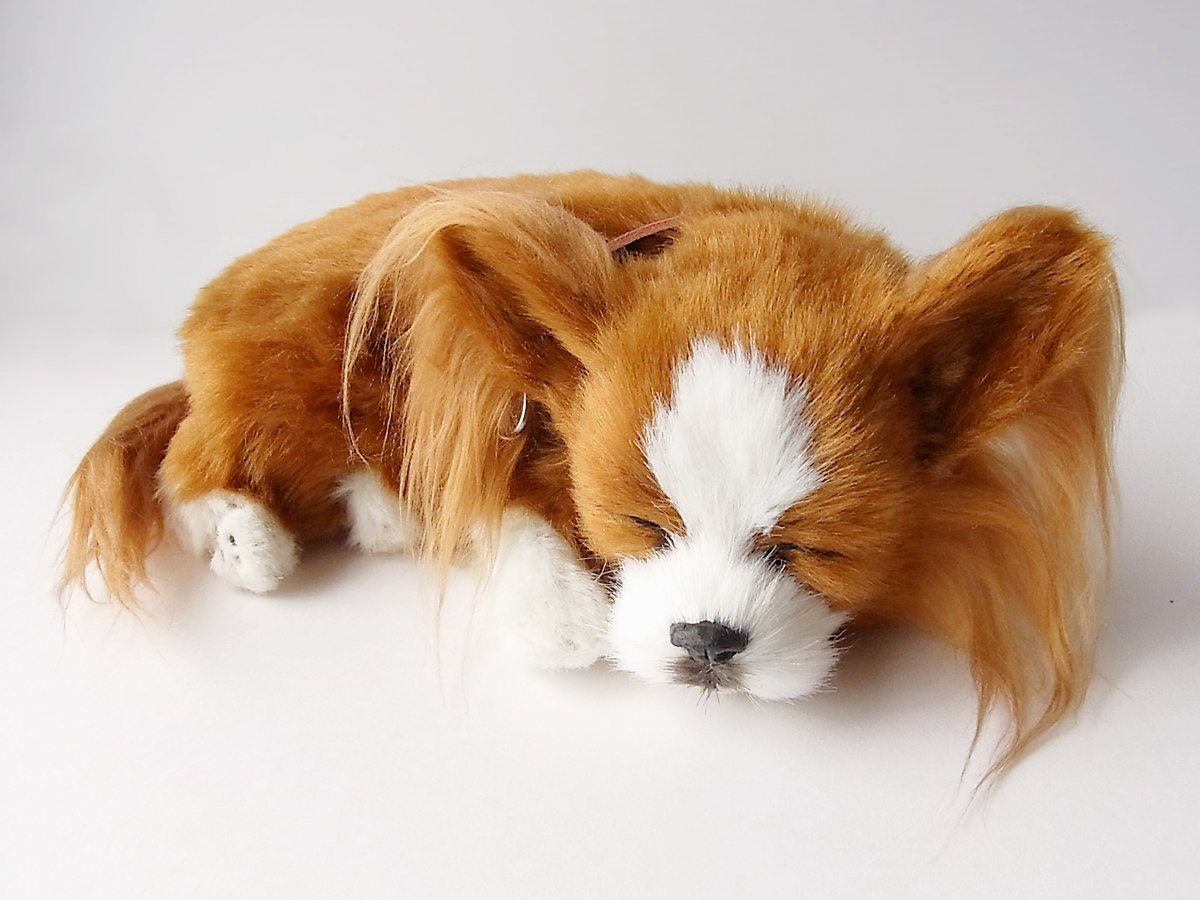
A tired Papillon dog resting.
Below are some common health issues in Papillons. Let’s explore these illnesses to help you prevent or provide early treatment:
Patellar Luxation
Papillons have a high risk of developing patellar luxation due to their physical structure.
-
Cause: Misalignment of the kneecap, typically from injury or jumping.
-
Symptoms: Limping, lifting one leg while running, or severe cases leading to arthritis.
-
Prevention & Treatment: Avoid letting your dog jump from heights, and supplement diet with glucosamine to support joint health.
Hypoglycemia
Although small, Papillons have a fast metabolism, making them vulnerable to hypoglycemia if not properly fed.
-
Symptoms: Shaking, weakness, fatigue, fainting.
-
Prevention & Treatment: Feed regularly, multiple small meals, and avoid long fasting periods.
Heart Disease (Patent Ductus Arteriosus - PDA)
Papillons are prone to congenital heart conditions that can be life-threatening.
-
Symptoms: Rapid breathing, fatigue during physical activity, sudden fainting.
-
Prevention & Treatment: Verify lineage carefully before purchasing, and schedule regular health check-ups for early detection.
Ear Infections
The Papillon's large, hairy ears can easily trap dust, creating favorable conditions for bacterial infections.
-
Symptoms: Ear discharge, frequent scratching or head shaking.
-
Prevention & Treatment: Regular ear cleaning, dry ears thoroughly after bathing, and use veterinary-prescribed medications in severe cases.
Price Guide & Tips for Buying Papillon Dogs in Vietnam
Let’s explore current prices and practical tips for buying a Papillon:
Papillon Price Guide (Vietnam):
| Origin | Approximate Price |
|---|---|
| Locally bred (without papers) | 4–6 million VND |
| Locally bred (with pedigree) | 10–20 million VND |
| Imported from Thailand | 15–20 million VND |
| Imported from Europe or USA | Over 50 million VND |
Note: Prices may vary depending on origin, age, gender, and color.
Tips for Buying Papillons
-
Purchase only from reputable breeders to ensure quality, authenticity, and health.
-
Carefully review pedigree certificates and vaccination records before buying.
-
Examine the dog’s appearance and overall health thoroughly before purchase.
-
Join Papillon enthusiast groups to learn from others’ experiences and gather additional insights.
Beautiful and Adorable Papillon Dog Images
If you’d like to admire or download beautiful and cute Papillon images, don’t miss our collection of charming Papillon photos below!
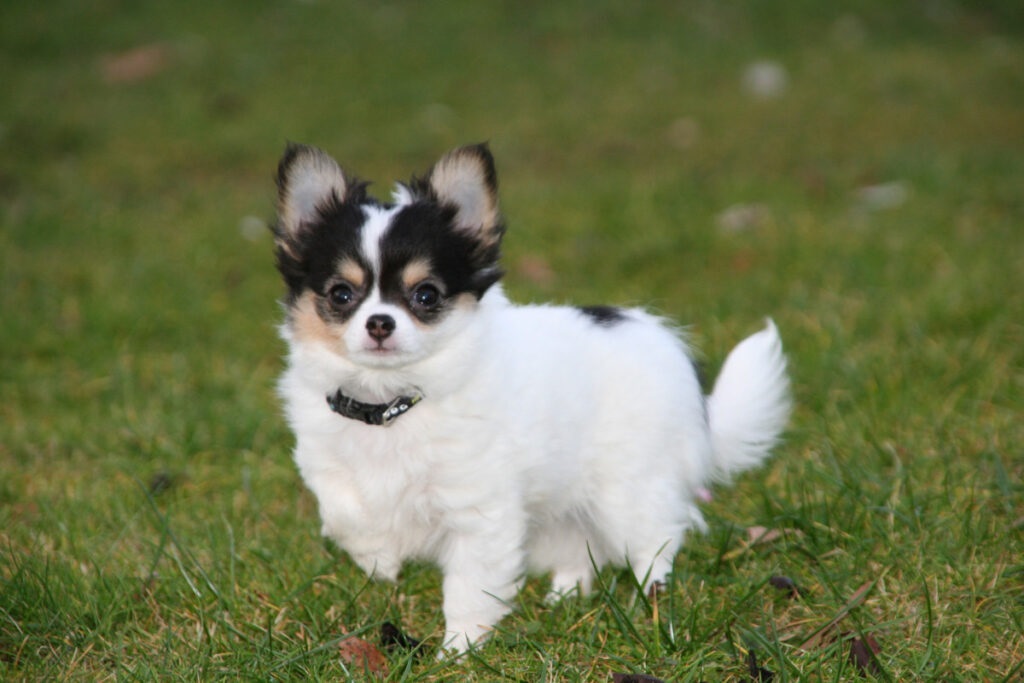
An adorable Papillon puppy.
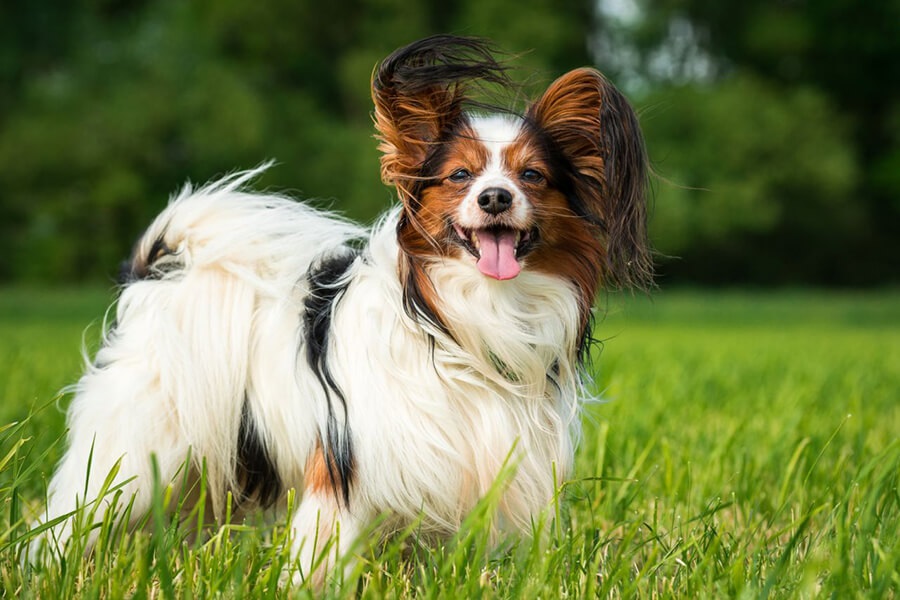
A Papillon dog with a cheerful expression.
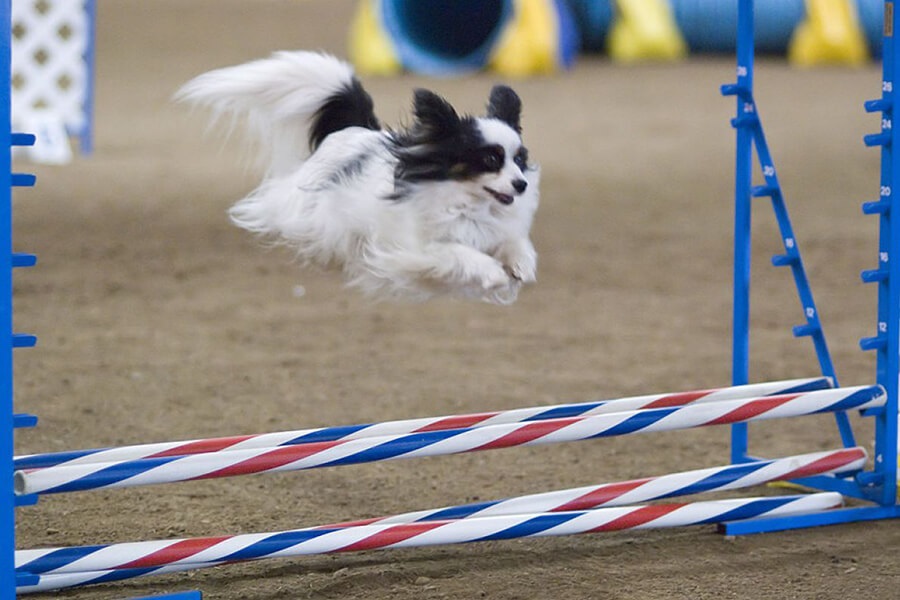
A Papillon dog jumping over a hurdle.

AI-generated images of Papillon dogs are stunning.
Through this article from dogbreed.wiki, you’ve learned a great deal about the Papillon breed—a small companion dog from France and Belgium, famous for its distinctive butterfly-shaped ears, intelligence, and playful personality. They’re ideal as adorable family pets.
Goodbye for now, and we look forward to seeing you again soon in future Blog posts, where we'll continue to explore even more fascinating dog breeds!

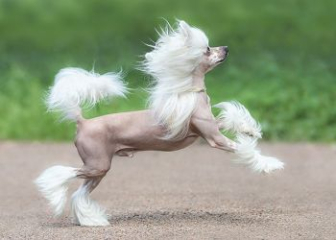

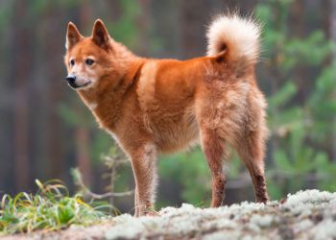

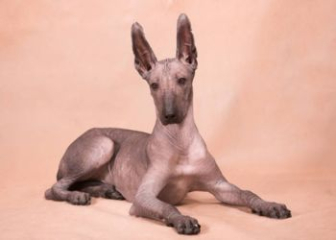



_350x250.jpg)




